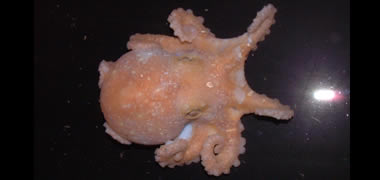-
Courses

Courses
Choosing a course is one of the most important decisions you'll ever make! View our courses and see what our students and lecturers have to say about the courses you are interested in at the links below.
-
University Life

University Life
Each year more than 4,000 choose University of Galway as their University of choice. Find out what life at University of Galway is all about here.
-
About University of Galway

About University of Galway
Since 1845, University of Galway has been sharing the highest quality teaching and research with Ireland and the world. Find out what makes our University so special – from our distinguished history to the latest news and campus developments.
-
Colleges & Schools

Colleges & Schools
University of Galway has earned international recognition as a research-led university with a commitment to top quality teaching across a range of key areas of expertise.
-
Research & Innovation

Research & Innovation
University of Galway’s vibrant research community take on some of the most pressing challenges of our times.
-
Business & Industry

Guiding Breakthrough Research at University of Galway
We explore and facilitate commercial opportunities for the research community at University of Galway, as well as facilitating industry partnership.
-
Alumni & Friends

Alumni & Friends
There are 128,000 University of Galway alumni worldwide. Stay connected to your alumni community! Join our social networks and update your details online.
-
Community Engagement

Community Engagement
At University of Galway, we believe that the best learning takes place when you apply what you learn in a real world context. That's why many of our courses include work placements or community projects.
July 2012 How to Survive an Ice Age
How to Survive an Ice Age
Tuesday, 31 July 2012

Researchers have uncovered how animals in Antarctica managed to survive glacial periods thousands of years ago when sea-ice encroached on their habitats. DNA evidence indicates that sea creatures used a variety of techniques, from surviving in the deep sea, to retreating into pools of unfrozen seawater. Scientists hope that by looking back in time it will help predict the likely impact of global warming on the Southern Ocean.
Natural climate cycles have caused massive glaciations on 40,000 and 100,000 year cycles over the past five million years. At times of maximum glaciation, sea-ice extended out into the Southern Ocean blocking sunlight from the surface waters, preventing phytoplankton from photosynthesising and hence cutting the food chain off at its source.
Additionally, massive glaciers and ice-sheets extended far out onto the continental shelf, scoring the sea-floor and destroying the habitat of many animals.
Biologists have never understood how animals in the seas surrounding Antarctica survived these Pliocene-Pleistocene glacial cycles. Was all the fauna of the Southern Ocean destroyed? Were animals able to seek refuge in the deep sea and recolonise from there? Or did marine animals seek refuge outside of the Southern Ocean and recolonise Antarctica from other Oceans?
In a paper published in Trends in Ecology & Evolution, researchers at National University of Ireland Galway and LaTrobe University in Australia provide the answer.
Dr Louise Allcock, a zoologist from National University of Ireland Galway’s Ryan Institute, explains. “We found the answer in the DNA of animals that are found in the Southern Ocean today. I’ve been studying Antarctic octopuses for many years and looking at the patterns of variation in their DNA. As I looked at other people's research on other animals, to compare their findings to my own, I noticed that there were some consistent patterns. One of the patterns we saw was that some animals had very limited variation, with large numbers of individuals having exactly the same DNA sequence at a given gene region. This is consistent with a population bottleneck - i.e., a massive reduction in the number of individuals in a short space of time. We can tie this with the survival of a tiny population on the continental shelf during glacial maxima. And, in fact, there's evidence from glaciology and other physical sciences that 'polynyas' - small areas free of sea ice - did persist during glacial maxima.”
This wasn’t the only pattern that researchers found however. By examining all the available published research they were able to identify at least four different patterns, each one relating to a different survival and recolonisation strategy. This improved understanding of survival mechanisms and the interpretation of molecular data will help scientists predict the likely impact of global warming on the Southern Ocean.
According to Dr Jan Strugnell, of the Department of Genetics, at La Trobe University: “There has been a recent marked increase in the number of studies using DNA to try and better understand the processes that have shaped the evolution of different animal groups that live in the Southern Ocean. By looking at all of these studies together, and taking into account their life history characteristics, we were able to detect patterns which give clues to how animal lineages have survived glacial cycles in the Southern Ocean. The different patterns give signatures for survival in ice free refugia on the continental shelf for some animal lineages and for survival in deep sea refugia in others.”
ENDS
Keywords: Press.
Author: Marketing and Communications Office, NUI Galway
« Back
Related news
12 December 2025
Researchers unlock secrets of spinal disc degeneration
10 December 2025
University’s Institute for Clinical Trials wins 2025 Collaboration in Medtech Award
8 December 2025
Na chéad trialacha ar domhan do leigheas nua ar phian ainsealach á gcur i gcrích in Éirinn
8 December 2025
World-first trials for chronic pain pioneered in Ireland
8 December 2025
Sensory Friendly Santa’s Grotto brings Christmas magic to children and their families















